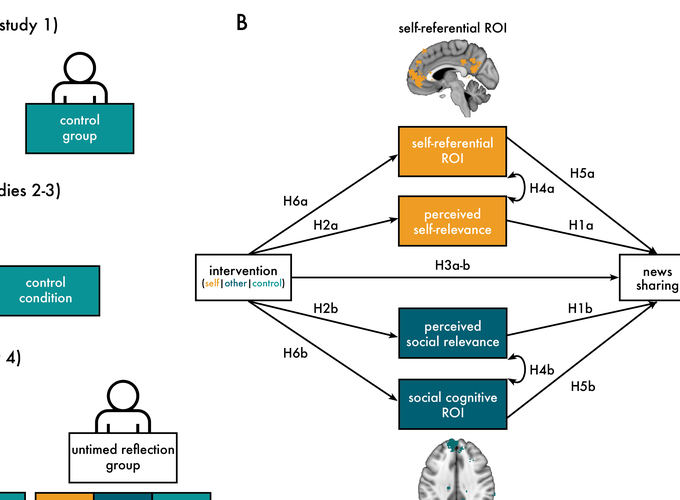Perceived self and social relevance of content motivates news sharing across cultures and topics
Abstract
Well-informed individual and collective decision-making is aided by access to high-quality, factual information. What motivates people to share high-quality news, and how can these motives be leveraged to promote news sharing? Based on the theory that self-related and social motives encourage sharing behavior, we designed and tested interventions to increase news sharing. In the interventions, individuals were exposed to actual news stories and were prompted to identify why the content was relevant to themselves (self-relevance) or people they know (social relevance). Across four studies (Nparticipants = 2,559, Nobservations = 18,780), we systematically examined the effectiveness of these interventions, their generalizability across news topics (climate change and health) and cultures (the United States of America and the Netherlands), their translation to more naturalistic contexts, and their underlying neuropsychological mechanisms. In all studies, we observed expected positive correlations among perceived self and social relevance and sharing intentions. In a neuroimaging study, we also observed corresponding increases in activity in self-referential and social cognitive brain regions. Using the content-framing interventions to test causal relationships, we found that the interventions increased sharing intentions and behavior. Furthermore, we observed generalizability across news topics and cultural contexts and translation to an ecologically valid news exposure context. These findings advance theory by adding neural and behavioral evidence that self-related and social motives prompt people to share information, and demonstrate the ability of content-framing interventions to harness these motives to encourage high-quality news sharing.
